I have always liked "scoots" as I call them, the varied species of Scutellaria. Many are excellent plants for the rock garden, some can be aggressively spreading by stolons (so be forwarned, do your research), and there are well-behaved tall types suitable to the perennial border or wildflower meadow garden.
I was given a plant of Scutellaria incana by a garden visitor, and it turns out to be a highly ornamental plant, now among my favorite scoots. The species is native to much of eastern USA, found in 3 different varieties (var. incana, var. australis, var. punctata); I'm assuming mine is var. incana.
While it does grow 1.5 - 3' tall (mature plants can reach 4'), it an elegant plant of refined growth and leafage, valued for the super long display of flowers July through September (mine continue into October, witness my photos) when few other herbaceous plants are flowering, followed by an autumn show of whimsical purplish red seed pods. This plant has it all going on.
I show photos of a young flowering plant in 2008, and a couple views in 2009 after the plant put on lots of growth and numerous spikes of bloom. For further photos and information, including range maps, check out the links provided.
USDA Map
http://plants.usda.gov/java/profile?symbol=SCIN
an alternate distribution map (click on map to enlarge):
http://www.google.com/imgres?imgurl=http://www.everwilde.com/BONAP-Wildf...
3 good images
http://www.northcreeknurseries.com/index.cfm/fuseaction/plants.plantDeta...
Rob's Plants (some good images)
http://www.robsplants.com/plants/ScuteIncan.php
Image from University of Texas at Austin
http://www.wildflower.org/gallery/result.php?id_image=24550
Comments
Re: Scutellaria incana (Hoary Skullcap, Downy Skullcap)
I'm looking at plants from a new vantage point recently, of proven drought resistance, given endless weeks of heat and drought this year. With Scutellaria incana more established after planting three years ago, not only does the plant show very little stress from drought, it has grown larger and with more stems, and just breaking out into flower here at the beginning of August, a welcome and imposing sight in the garden. The stems have reached 3-1/2' (105 cm) tall.
Re: Scutellaria incana (Hoary Skullcap, Downy Skullcap)
Today, a good overall view of Scutellaria incana. A few of the lower leaves are turning yellow from the drought, but overall, I'm most impressed at how the plant is doing given that it's had almost no rainfall (and no hose watering) in 2 months. We may be needing to pay special attention to such drought-resistant plants in the future, even here in New England.
Re: Scutellaria incana (Hoary Skullcap, Downy Skullcap)
Cross-linking to 2010 photos of the seed pods of Scutellaria incana, which put on a great show this year in spite of the record drought.
Note: no way to resolve links from the old NARGS Forum to this new forum, so I'm uploading two photos showing the beautiful seed pods. These photos taken Sept 18, 2010.
Just starting to flower,
Just starting to flower, later than normal judging from dates on past years photos. The plant now reaches 4' tall, going to make a grand show this year.
Scutellaria incana looks very
Scutellaria incana looks very nice, Mark. And the late flowering makes it useful at this time of the year.
Wow, Mark,
Wow, Mark,
that's as impressive in seed as it is in flower!
i hope it sets plenty of seed this year as I'll be looking for it on the Seed List!<grin>
cheers
fermi
I've made a note to collect
I've made a note to collect seed on it this year, not hard to miss as I do enjoy looking at the attractive pods. Seed is late ripening, perhaps sometime in October.
Mark McD wrote:
[quote=Mark McD]
I've made a note to collect seed on it this year, not hard to miss as I do enjoy looking at the attractive pods. Seed is late ripening, perhaps sometime in October.
[/quote]
Did you remember, Mark?
cheers
fermi
I did remember, seed stems
I did remember, seed stems harvested (hopefully not too early), still in a paper bag. Once again missed the deadline to donate seed to NARGS. Thanks for the reminder.
Going to use the newly added "Read Reply Later" capability (button on bottom right of every message) as a method to remember to enact on your request.
What a beautiful plant! I can
What a beautiful plant! I can imagine contrasting this against the yellows of some Kniphofia triangularis plants I grew from seed- also late bloomers (late August to frost). If you have some seed to spare, I'd love to be added to the list.
Gordon (Tingley), I have
Gordon (Tingley), I have added your name to a post-it note as a reminder. Hope to get some seed cleaned in a couple weeks after some crazy work deadlines are passed.
Thank you Mark, I have a few
Thank you Mark, I have a few seeds I could send you in exchange if you wish- Gillenia trifoliata (Porteranthus trifoliatus), or some seed from Kniphofia triangularis (easy to germinate, and an excellent late season poker for the garden. Let me know if either are of interest ( the Kniphofia are collected from seedlings obtained from Jelitto seeds) They have bloomed out in colors ranging from pure yellow, orange through coral tones, with some bicolor plants.

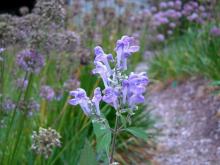
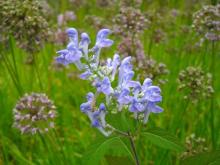
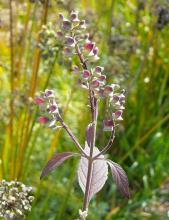
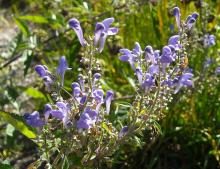
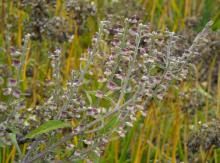
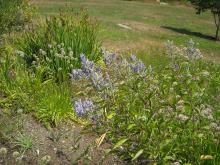
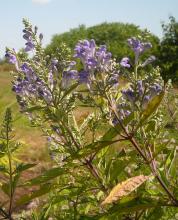
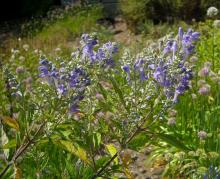
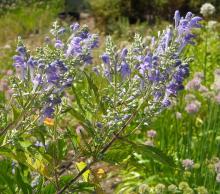
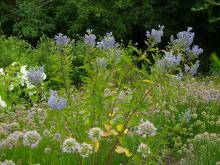
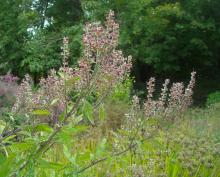
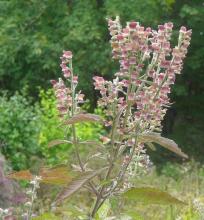
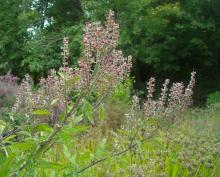
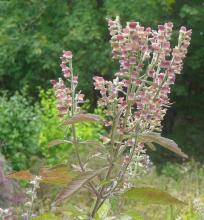
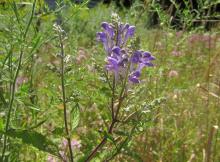
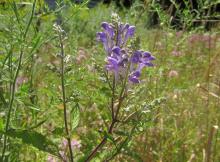
Excellent photo essay, Mark!
That's a very attractive plant, and it certainly does have a lot going for it even beyond the flowering season. I'll definitely keep an eye out for seeds.